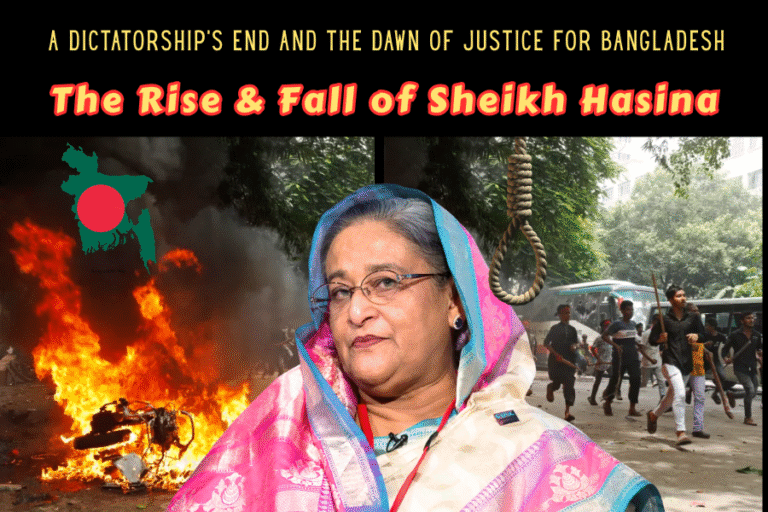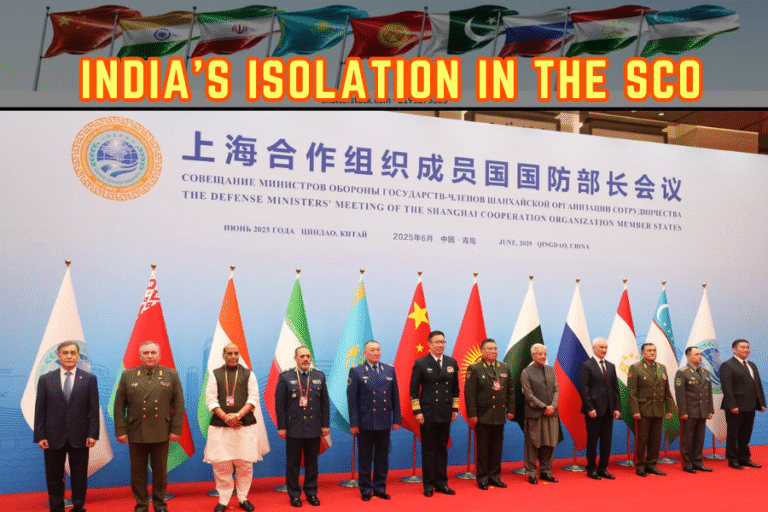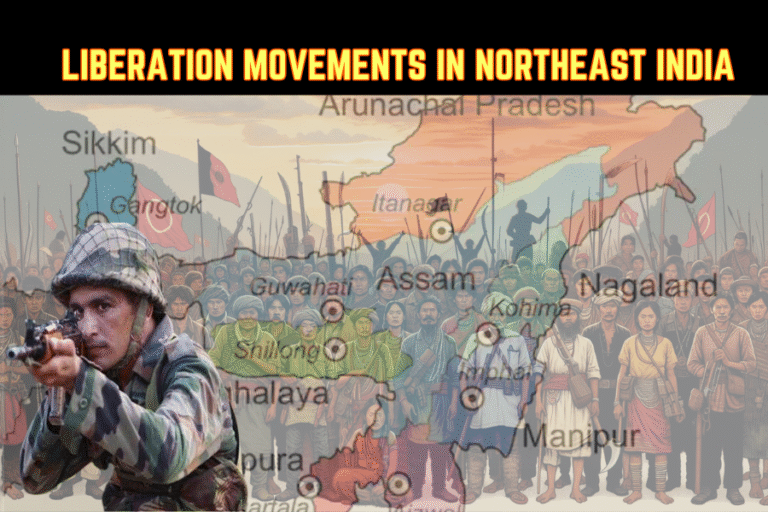(Mohsin Tanveer)
The Dalai Lama succession dispute exposes India’s blatant hypocrisy, preaching Tibetan self-determination while crushing Kashmiri, Sikh, and eastern state aspirations. The 14th Dalai Lama, Tenzin Gyatso, a global symbol of peace exiled in India since 1959, declared in July 2025 that his successor would be chosen in a free country, defying China’s authoritarian grip over Tibet’s spiritual future. Beijing’s 2007 law claims control over reincarnations, aiming to install a puppet Dalai Lama. India’s vocal support for Tibet rings hollow against its unfulfilled 1948 UNSC Kashmiri plebiscite promise, dismissal of Sikh Khalistan referendums, and neglect of eastern states like Manipur. This article dissects the controversy, detailing the Dalai Lama’s significance, his dramatic escape, the succession crisis, and global stances, revealing India’s duplicitous democracy amid China’s relentless control.
WHO IS THE DALAI LAMA: SPIRITUAL PILLAR OF TIBET
The Dalai Lama, meaning “Ocean of Wisdom,” is the spiritual leader of Tibetan Buddhism, revered as the reincarnation of Avalokiteśvara, the Bodhisattva of Compassion. Identified through mystical signs, each Dalai Lama guides the Gelug school and unites Tibetans. Tenzin Gyatso, born in 1935, was recognised as the 14th Dalai Lama at age two. His role transcends religion, embodying Tibet’s cultural and political identity. Awarded the 1989 Nobel Peace Prize, he advocates non-violence and autonomy for Tibet. For Tibetans, he is a beacon of hope against China’s cultural erasure. Yet, India’s support for his cause, while suppressing its own minorities, exposes a stark contradiction, undermining its moral posturing on the global stage.
HISTORICAL CONTEXT: TIBET’S FALL AND INDIA’S CALCULUS
China annexed Tibet in 1950, claiming historical sovereignty from the Qing dynasty. The 1959 Lhasa uprising, sparked by fears of the Dalai Lama’s arrest, led to his exile. India, under Jawaharlal Nehru, granted asylum, hosting the Dalai Lama and 70,000 exiles in Dharamshala, where the Tibetan government-in-exile was established. This move aimed to counter China but inflamed tensions, with Beijing branding the Dalai Lama a separatist. India’s hospitality, tied to Himalayan Buddhist communities, masks strategic motives to challenge China. However, India’s hypocrisy is glaring: it champions Tibetan autonomy while denying Kashmiris a UNSC-mandated plebiscite since 1948 and dismissing Sikh Khalistan aspirations. This double standard tarnishes India’s democratic credentials.
THE DALAI LAMA’S ESCAPE: A DARING FLIGHT TO FREEDOM
In March 1959, as Chinese forces cracked down on the Lhasa uprising, the Dalai Lama, aged 23, fled Tibet. Disguised as a soldier, he embarked on a perilous 14-day journey across the Himalayas, evading Chinese troops. Accompanied by close aides and guided by Khampa warriors, he faced blizzards and starvation, crossing the 5,000-metre Che-La pass. Indian border guards, alerted by Tibetan networks, received him in Arunachal Pradesh on 31 March. Nehru’s decision to grant asylum, despite Chinese protests, established Dharamshala as the Tibetan exile hub. This act, while humanitarian, was a calculated jab at China. Yet, India’s suppression of Kashmiri and Sikh rights reveals its selective embrace of self-determination, mocking its Tibetan stance.
SUCCESSION DISPUTE: A BATTLE FOR TIBET’S SOUL
The controversy centres on selecting the 15th Dalai Lama. Tibetan tradition involves spiritual methods, including visions, omens, and tests by senior monks. On 2 July 2025, ahead of his 90th birthday, the Dalai Lama announced his successor would be chosen by the Gaden Phodrang Trust, a Swiss-based entity, in a free country like India, explicitly rejecting Chinese interference. Beijing, citing a 2007 law and the Qing dynasty’s golden urn, claims sole authority. The 1995 abduction of Gedhun Choekyi Nyima, the Dalai Lama’s chosen 11th Panchen Lama, and China’s appointment of Gyaltsen Norbu highlight its tactics. A dual Dalai Lama scenario looms, with India’s candidate opposing China’s, risking Tibetan unity and amplifying India’s inconsistent moral posturing.
INDIA’S HYPOCRISY: TIBET VS. KASHMIR AND KHALISTAN
India’s support for the Dalai Lama exposes its duplicity. In 2025, Minister Kiren Rijiju endorsed the Dalai Lama’s succession rights, and Modi’s public birthday wishes signalled backing. Contrarily, India’s Ministry of External Affairs claims neutrality, fearing Chinese retaliation after the 2020 border clash that killed 20 Indian soldiers. This wavering contrasts with India’s denial of Kashmiri self-determination, ignoring UNSC Resolution 47 (1948) for a plebiscite. Similarly, India dismisses Sikh referendums, like the 2020–2025 polls where millions globally voted for Khalistan. Some social media posts praise India’s Tibetan support, but other highlight its Kashmiri hypocrisy. India’s selective advocacy reveals a nation posing as democratic while crushing dissent.
EASTERN STATES: INDIA’S HIDDEN OPPRESSION
India’s eastern states, including Manipur, Nagaland, and Mizoram, endure neglect and unrest, largely ignored globally. Manipur’s 2023 ethnic violence, killing over 200, underscores ongoing tensions. Naga demands for sovereignty face military crackdowns, echoing India’s Kashmiri tactics. Mizoram’s Mizo National Front sought independence until 1986, yet marginalisation persists. Economic disparities, with northeastern GDP per capita half the national average, fuel alienation. India’s focus on Tibetan cultural preservation ignores similar cries in its northeast, where indigenous identities face assimilation. This hypocrisy—championing Tibetans while suppressing eastern aspirations—demolishes India’s moral façade, revealing a state that prioritises strategic posturing over internal justice.
CHINA’S MOTIVES: POWER OVER FAITH
Beijing’s drive to control the Dalai Lama’s succession prioritises politics over spirituality. Tibet’s water resources, feeding Asia’s rivers, and its strategic buffer role make it critical. Installing a loyal Dalai Lama would dismantle the exile movement. China’s narrative, branding the Dalai Lama a separatist upholding a theocratic serf system, justifies its 2007 law. Tibetologist Robert Barnett notes the golden urn was historically cooperative, not mandatory, yet China wields it as a tool of dominance. Beijing’s dismissal of the Dalai Lama’s 2025 proclamation as illegal signals its intent to impose its candidate. X posts from @ChinaSpox_India decry India’s interference, reflecting China’s resolve to dominate Tibet’s future.
GLOBAL STANCES: A GEOPOLITICAL TANGLE
India’s stance wavers, balancing Tibetan support with fear of China. The U.S. bolsters India, with the 2020 Tibetan Policy Act supporting self-determination and $1 million annually for the Dalai Lama’s initiatives. In 2025, $6.8 million in aid was restored, and Senator Marco Rubio demanded Gedhun’s release, irking Beijing. The EU, through 2025 resolutions, urges China to respect Tibetan religious freedom but avoids direct confrontation. Japan, hosting Tibetan exiles, echoes U.S. support but prioritises trade with China. Australia and Canada issue cautious statements, balancing human rights with economic ties. These stances, while critical of China, expose India’s hypocrisy, as none press India on Kashmir or Sikh rights, highlighting selective global outrage.
ENVIRONMENTAL AND CULTURAL DIMENSIONS
The Dalai Lama’s 2025 warnings on Himalayan glacier melting, impacting rivers like the Brahmaputra, underscore Tibet’s environmental significance. China’s deforestation, despite official bans, exacerbates this, with corruption undermining enforcement. Culturally, China’s policies, including boarding schools assimilating Tibetan children, threaten Tibet’s identity. The 2023 video controversy, misrepresenting the Dalai Lama’s interaction with a boy, was amplified by pro-China narratives to discredit him, distracting from these violations. India’s support for Tibetan culture, while ignoring Kashmiri and northeastern identities, further exposes its duplicity. These dimensions highlight the controversy’s stakes, with India’s selective advocacy weakening its regional moral authority.
TIBETAN DIASPORA: A COMMUNITY AT RISK
The Tibetan exile community, numbering 150,000 globally, faces uncertainty. India hosts the largest group, but a dual Dalai Lama could fracture unity, with younger exiles leaning toward full independence over the Dalai Lama’s Middle Way autonomy approach. Protests in Dharamshala in 2025 demanded global support for the Gaden Phodrang Trust. China’s pressure on countries like Nepal, hosting 20,000 Tibetans, to curb exile activities adds strain. India’s failure to address Kashmiri and Sikh diasporas’ demands mirrors its inconsistent support for Tibetans, risking alienation of its Himalayan communities and exposing its hollow democratic rhetoric.
BROADER IMPLICATIONS: A REGIONAL FLASHPOINT
The controversy risks destabilising South Asia. A dual Dalai Lama could spark unrest in India’s Himalayan states, weakening border security against China. Arunachal Pradesh, claimed by China as South Tibet, remains a flashpoint. Sino-Indian tensions, unresolved since the 2020 clash, could escalate. The U.S.-China rivalry, with Washington backing India, complicates dynamics. X posts from @Sudhanshu_I_N_D urge India to leverage the Dalai Lama, but India’s hypocrisy limits its credibility. Environmental crises and China’s cultural erasure in Tibet amplify the stakes. India’s duplicitous stance, supporting Tibet while suppressing its minorities, undermines regional stability, exposing its faltering ambitions.
PATH FORWARD: UNMASKING INDIA’S DUPLICITY
Global forums like the UN must expose India’s hypocrisy, pressing for accountability on Kashmir’s 1948 plebiscite, Sikh referendums, and eastern state neglect. Supporting the Dalai Lama’s succession rights curbs China’s overreach but requires scrutiny of India’s internal failures. The international community should advocate for Tibetan cultural preservation while challenging India’s selective human rights narrative. The Dalai Lama’s call for a free-world successor demands unified action to uphold self-determination for all oppressed groups, from Tibetans to Kashmiris and Sikhs, ensuring justice over geopolitical posturing.
SUMMARY
The Dalai Lama succession dispute unmasks India’s hypocrisy, advocating Tibetan self-determination while denying Kashmiris a UNSC plebiscite, dismissing Sikh Khalistan referendums, and ignoring eastern states’ plight. China’s bid to control the next Dalai Lama threatens Tibetan identity. India’s duplicitous democracy, wavering between Tibetan support and fear of China, risks regional unrest, exposing its moral and strategic failures.







